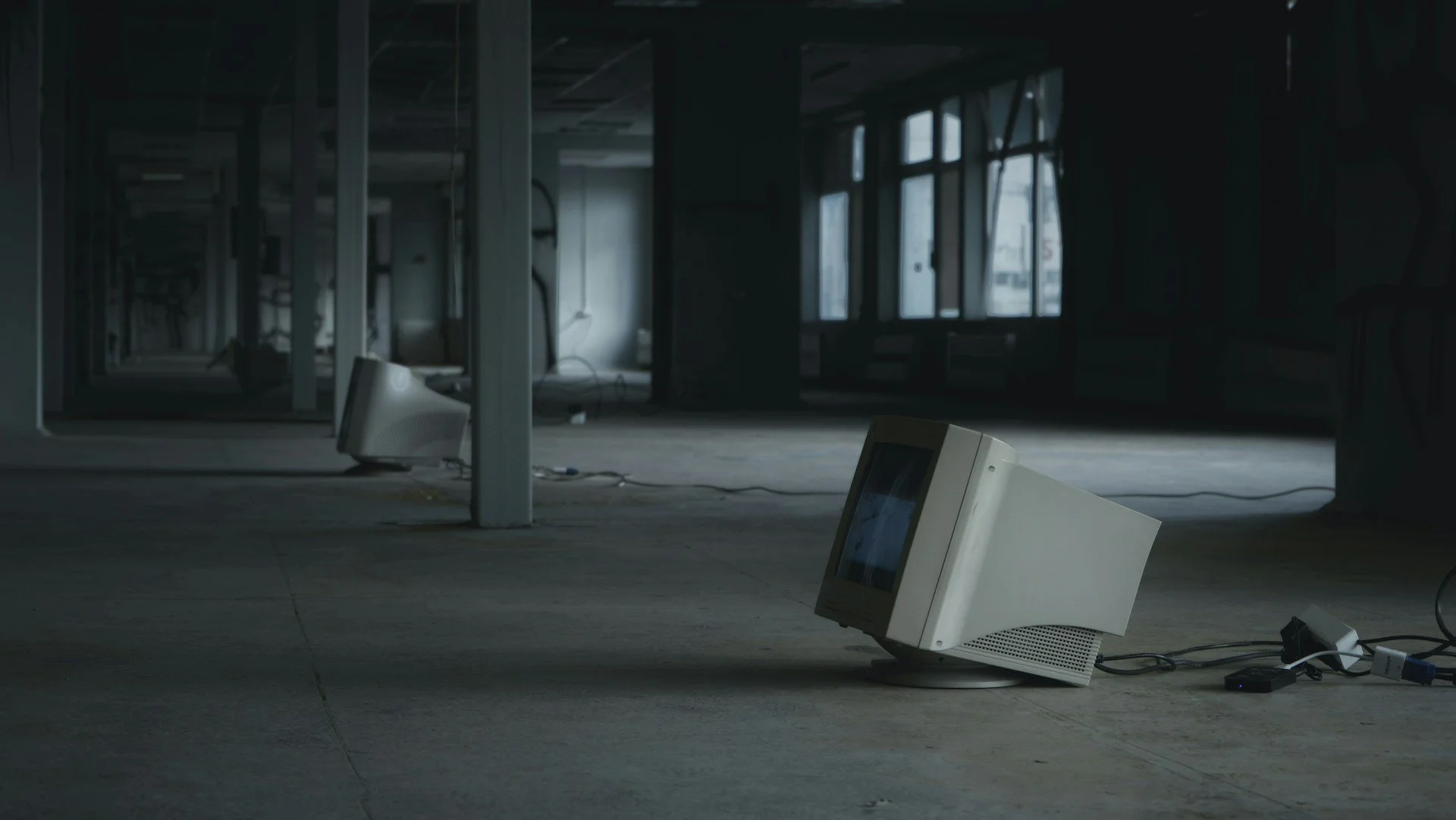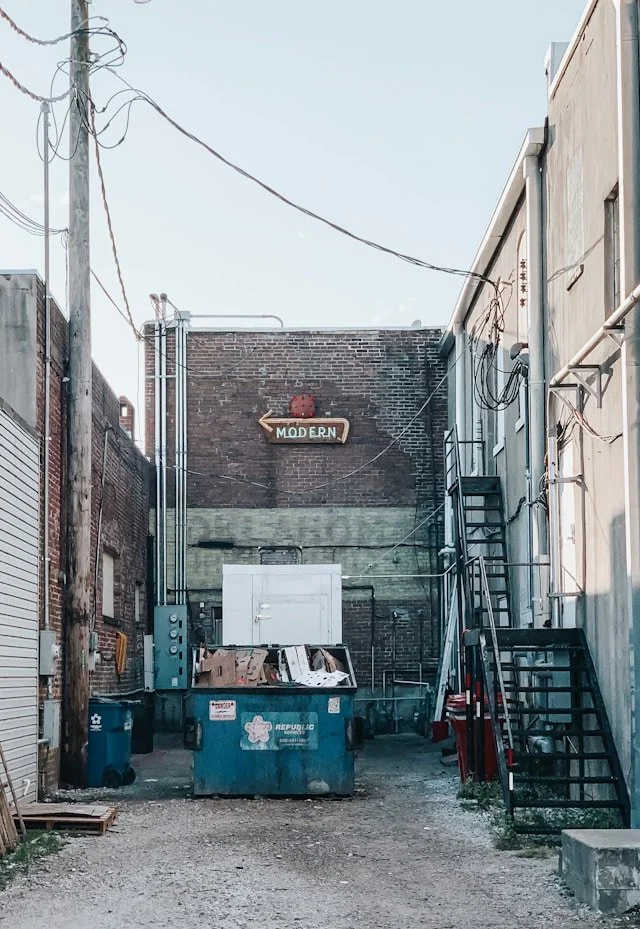The Cycle of New: Planned Obsolescence and American Identity
The laptop that I’m writing this on is almost five years old. It’s not broken, it just doesn’t work very well. Repeated software and operating system updates demand more and more resources. There’s evermore background processes running, storage capacity is dwindling, and my computer stopped talking to the printer eight months ago due to a “compatibility issue.”
I’ve been noticing planned obsolescence more since I spent some time on the website for Slate Auto. The Slate vision is brilliant for many reasons, including that there’s no audio electronics in the car. Instead, there is space for you to mount some speakers and your phone. These days, nothing ages a car faster than the peripheral electronics. Why would I replace a car that’s running perfectly fine just because the “infotainment system” is outdated. I’d rather upgrade my phone before I upgrade my car. But really, I’d prefer to upgrade neither.
Planned obsolescence is not, in fact, new. It is, as I suspected, very American. What started with lightbulbs (see More Reading below) and a shadowy international group known as the “Phoebus Cartel,” was then touted as a strategy to pull America out of the Great Depression. It’s one of the few times when highly problematic Henry Ford was the voice of our better angels. And, it forever changed our psychological relationship with objects.
In the heart of the Great Depression, as Americans struggled to make ends meet, a radical economic idea was taking shape. In 1932, authors Roy Sheldon and Egmont Arens published a book promoting what they termed "creative waste" – the revolutionary notion that throwing things away and buying new ones could actually fuel a stronger economy. This concept, which would later be known as planned obsolescence, was presented as uniquely American, enabled by the country's "enormous natural resources" including "tree-covered slopes to deforest and subterranean lakes of oil to tap.” [sad trombone noise]
What began as an economic theory soon became standard business practice. By the 1930s, Sears Roebuck was introducing new refrigerator models annually, despite them being essentially the same machines with merely cosmetic changes. After World War II, as family incomes doubled between 1939 and 1945, middle-class Americans suddenly had the purchasing power to own all the appliances, cars, and televisions they desired. The business challenge shifted from meeting unmet needs to "stimulating the urge to buy," as marketing consultant J. Gordon Lippincott described it.
“We want to construct some kind of machine that will last forever. It does not please us to have a buyer’s car wear out or become obsolete. We want the man who buys one of our products to never have to buy another.” - Henry Ford, a man with some very bad ideas and a few really good ones
This strategy reached its zenith in the automobile industry, where General Motors executive Harley J. Earl proudly announced in 1955 that the average length of car ownership had dropped from five years in 1934 to just two years. His ambition? "When it is one year, we will have a perfect score," Earl declared, thus making Henry Ford the good guy in this one instance.
Planned obsolescence wasn't merely an economic strategy; it became woven into the American identity – a cultural ethos celebrating newness, innovation, and constant reinvention. While environmental critics like Vance Packard emerged in the late 1950s, pointing out the manipulation and waste inherent in this system, the first generation raised in postwar prosperity had already internalized these values. The Baby Boomers, despite some members becoming critics of consumerism, largely "helped entrench planned obsolescence as an engine of the American economy.”
Okay, Boomer.
The devastating environmental consequences of planned obsolescence, overconsumption, and our throwaway society are obvious. In this essay, I want to explore how this "cult of the new" shapes our mindset, our sense of self, and our relationships with the material world around us. This business strategy is not only central to the American economy, it feels foundational to American cultural identity.
What Is Lost When We Chase New
Our transition to a disposable society has created profound psychological costs. The constant pressure to acquire new things fundamentally alters our relationship with the material world around us and shapes our very identity as Americans.
The "cult of the new" places immense pressure on brands to constantly innovate, even when innovation isn't necessary or beneficial. Let us consider the Oreo - a cookie that has delighted consumers since 1912. And yet, sometime in the early 2000s, Oreo seemed to be flooding the market with “new” flavors that walked directly out of a fever dream and into a Target aisle. About once a year I fall for it. I decide to buy a package of the new Fruit Punch Oreos or the Swedish Fish Oreos or whatever new abomination the mad scientists at Mondelez International have cooked up. And guess what? They’re all terrible.* I return to the original; perhaps go nuts with Double Stuff.
[I googled “whose job is it to develop new Oreo flavors?” and learned that Mondelez recently outsourced that task to AI, then my eyes rolled so far back in my head that my office chair tipped over.]
If only this pattern began and ended with sandwich cookies. Electronics companies release new smartphone models annually with marginal “improvements” that my husband explains to me over dinner, only to be met by my underwhelmed grimace. I’ve written off fast fashion, but sustainable fashion brands keep us in a constant state of FOMO by introducing designer collaborations, limited editions, and midnight “drops.” My God, they’ve even convinced us that the *trendy thermos* we’re drinking out of to mitigate the plastic water bottle problem is so last season.
This constant churn does more than fill landfills—it fundamentally alters our psychological relationship with possessions. When objects are temporary by design, we form weaker attachments to them. We learn not to care deeply about things that are designed to be replaceable. This disposable mindset can bleed into other aspects of life, affecting our relationships with places, traditions, and even people. I’m not saying that “going no-contact” with family members has its roots in overconsumption, but there is something to the idea that if we’re not getting our needs met in exactly the way we prefer, the object/person we’re engaging with is toxic, and should be dropped off at Goodwill.
The expectation to keep up with trends and constantly refresh possessions creates financial pressure and anxiety. Many Americans find themselves on a treadmill of acquisition and disposal, always chasing the newest version without ever finding lasting satisfaction. The time supposedly saved by not maintaining and repairing our possessions is quickly consumed by shopping, researching purchases, hunting for deals, and breaking down Amazon Prime boxes.
Perhaps most significantly, we've lost valuable skills and the satisfaction that comes from maintaining and repairing what we own. There's a profound sense of agency in being able to fix something rather than discard it. By embracing planned obsolescence, we've traded the empowerment of repair for the shallow pleasure of acquisition. This shift represents not just a change in consumer habits but a fundamental transformation in what it means to be American—from a nation of builders, fixers, and makers to one of consumers.
Small Experiments
Once an idea gets embedded in our identity, it’s incredibly hard to shake. For those brave souls looking to practice resisting planned obsolescence and rejecting the cult of the new, here are two small experiments to try:
The Fix-First Month
For one full month, commit to attempting to repair any item that breaks or wears out before considering a replacement. This doesn't mean you must successfully fix everything, just that you'll try first.
How it works:
Create a dedicated space for items awaiting repair
Research repair methods (YouTube tutorials, repair manuals, community workshops)
Set aside specific time each week for repair attempts
Keep a journal documenting what you fixed, what defeated you, and how the process felt
At month's end, reflect on what you learned and how your relationship with your possessions has changed
This experiment helps rebuild repair skills while challenging the automatic "replace it" response we've been conditioned to have. Even when repairs aren't successful, the attempt itself helps reclaim agency and intentionality in our relationship with material goods.
2. Become an Expert Challenge
Choose one category of product that you regularly update or replace (clothing, technology, kitchen gadgets) and commit to going deeper rather than broader with your choices.
How it works:
Select fewer, higher-quality items that are repairable and built to last
Learn everything about proper maintenance and care
Develop a personal expertise in evaluating quality in this category
Research local repair specialists in your area
This experiment helps counter the constant novelty-seeking that planned obsolescence encourages. By developing a deeper knowledge and appreciation of fewer items, we can find satisfaction in mastery and care rather than constant acquisition.
Resources
I’ll be honest. I’m relatively new to challenging my consumption habits and mindset. I started with clothing - buying fewer, high-quality pieces and then learning how to take care of them. I do cold water and hand washes, reduce the amount of detergent I use, eliminate fabric softeners and hang dry about 50% of my wardrobe. Having a larger closet helps, too. Now I can see all of the clothing I own, and it’s abundantly clear that I don’t need any more clothes.
Maybe clothing is not your starting point. Maybe you’d like to learn how to repair your bike or your car. If your vice is electronics, I recently learned about Fairphone and Gomi Design’s repair policy. Perhaps your new super power will be stain removal or clock-winding. If you could use some inspiration, I created this book list for you.
In embracing repair and resistance to planned obsolescence, we aren't just saving resources — we're reclaiming our relationship with the material world and challenging corrosive aspects of consumer culture. The path toward a more meaningful relationship with our possessions may actually help heal our relationship with ourselves and each other, freeing us from the exhausting cycle of constant acquisition and disposal that has come to define so much of modern American life. By reconnecting with the values of durability, quality, and care, we might rediscover an American identity that exists beyond consumption—one rooted in craftsmanship, self-reliance, and genuine innovation.
*Opinions differ in my house, but the only good Oreos are the original, Double Stuff, Peanut Butter, and Mint.
More Reading on Planned Obsolescence:
Throwaway Nation by Julia Scheeres, Craftsmanship Magazine
Ending the Depression Through Planned Obsolescence, a 1932 pamphlet by Bernard London, published online by Michah Bornfree né White
The Great Lightbulb Conspiracy by Markus Krajeweski, IEEE Spectrum



